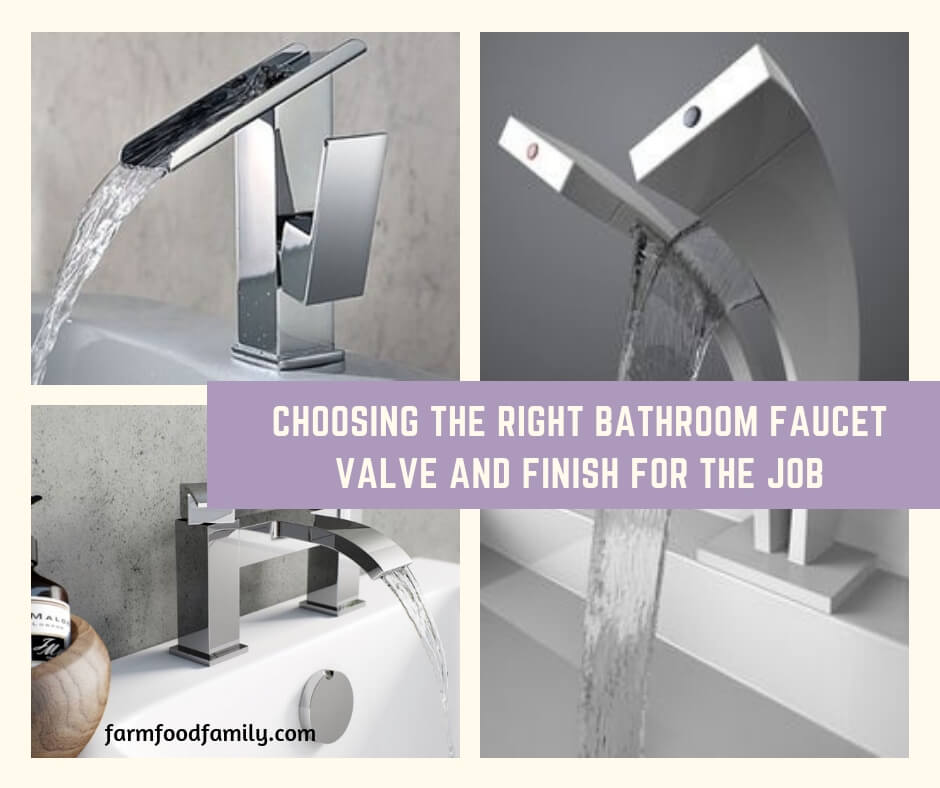The bathroom faucet is an integral part of any bathroom design. Choosing the right size, faucet valve and finish can ensure the faucet’s long life.
Not all bathroom faucets are created equal. In addition to the style of the faucet and type of handle used, the finish, size and faucet valve can have a big impact on the use of the faucet. Be sure to pick the right faucet to complete the bathroom design the faucet’s attributes and potential use.
The Faucet Valve

The faucet’s valve is an essential part of the faucet, although not a part that many homeowners may give a lot of thought to. A leaky bathroom faucet however, can be the result of a faucet valve wearing out. Prevent this from happening by choosing a long wearing valve.
In many less expensive and older faucets, the valve’s disc on which the handle turns is made of plastic. Over time, the turning of a bathroom faucet handle, and debris from hard water can begin to wear down the plastic.
To turn off the faucet, the user must twist the handle tighter and tighter to prevent drips. Eventually the plastic is so worn out that the handle cannot be turned tightly enough to completely shut off the water flow.
Newer faucets and faucet technologies make use of ceramic disc valves. The ceramic disk valve cannot wear out no matter how often the handle is turned, how hard, or how much debris builds up inside the faucet.
While a faucet with a ceramic disk valve may be more expensive, it can save the homeowner the expense of wasted water and the replacement of the faucet when the plastic valve wears out.
Related: 30 Faucet Brands For Your Bathroom & Kitchen (Worst & Reliable)
The Faucet Size

There are three sizes of faucet and handle spread traditionally used in a counter top mounted faucet. The single hole faucet, has one hole is drilled into the counter.
The faucet itself may have a single lever mounted on top, or two handles coming off of its stem. Single hole faucets are typically more contemporary in style and design, and are suitable for use with a vessel sink.
A 4” or center spread faucet utilizes three holes in the counter, drilled 4” apart from the center of each of the handles. Two styles of faucet will fit into this spread.
A centerset faucet consists of an escutcheon plate onto which the handles and spout are mounted. A mini spread faucet has no escutcheon plate; the handles and spout are mounted directly to the counter.
A 4” spread faucet may be difficult for the homeowner to keep clean, as the handles and spout are mounted so close together that it can be difficult to get between them to wipe up water and toothpaste stains.
Some smaller pedestal sinks may be drilled for a 4” spread to save space on either side. Homeowners needing this additional space, may want to choose a single hole faucet instead for ease of cleaning and save spacing.
An 8” or widespread faucet utilizes three holes drilled 8” apart from the center of each handle. Widespread faucets are available in any style, and are easily cleaned. The widespread faucet is the most popular size of faucet available on the market today and suitable for nearly any bathroom design.
Faucet Finishes

Bathroom faucets today are available in multiple finishes and colors. While these choices allow the homeowner customization of their bathroom design, care should be taken when selecting the finish in regards to the cleaning of the faucet.
Polished chrome is among the least expensive and easiest found faucet finishes on the market. Chrome is impervious to staining, stripping and wearing and can be cleaned with any cleaning product.
For homes with small children, or families who wish to clean their bathroom with bleach, chrome makes a great deal of sense.
Polished nickel, satin nickel and other metal finishes rise and fall with popularity in the bathroom design. These finishes can be affected by hard water, cleaning agents and long term use and need some maintenance.
If the faucet finish has been coated in a PVD, or physical vapor deposition, finish, the faucet will be impervious to everything except bleach which will break down the finish unevenly, resulting in a milky appearance.
Homes located near salt water, or with hard water should make use of PVD finishes to avoid discoloration of the faucet. Bleach will need to be avoided during cleaning, but other cleaning products can be used without problems.
Powder coat finishes are more difficult to find, but are available for homeowners who wish to have a black, red, white or other colored faucet as part of their bathroom design. The powder coat is fairly resistant to everything except scratching, so harsh scrubbing agents should be avoided in their use.
When the right faucet is chosen, taking into account the valve, the size and the finish of the faucet the homeowner will be able to count on the faucet continuing to function and enhance the bathroom design for years to come.


